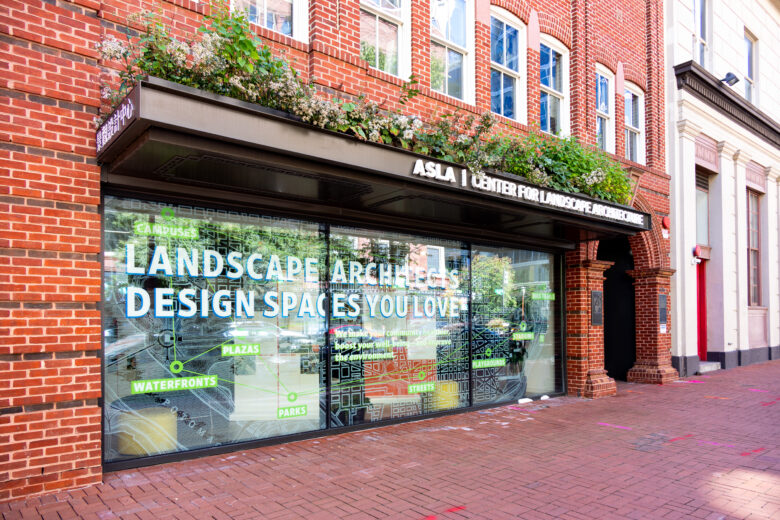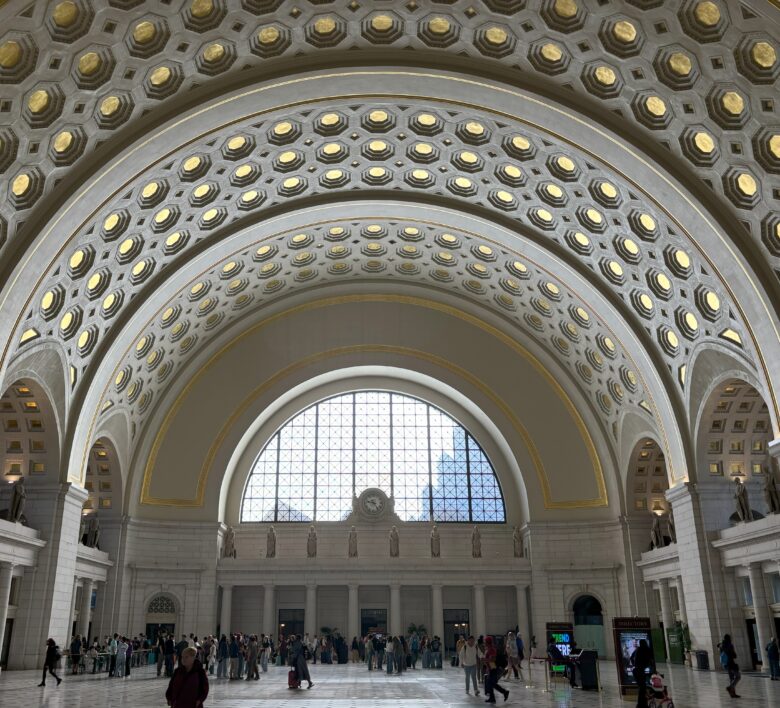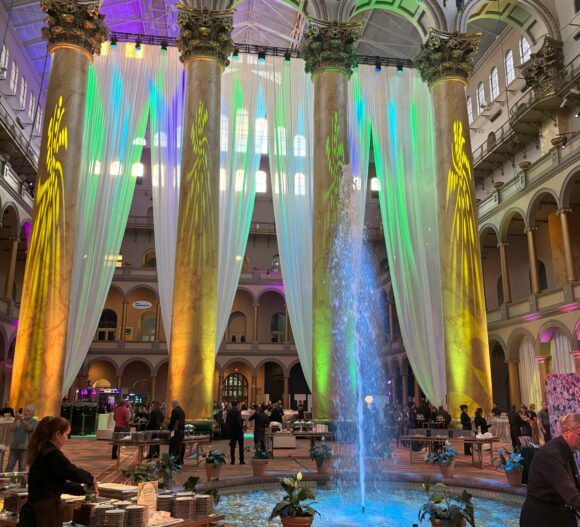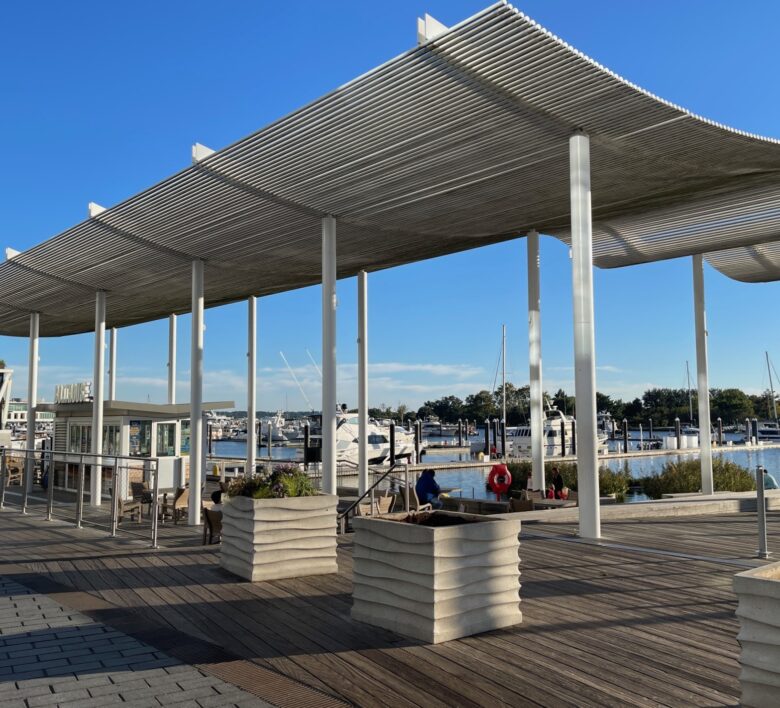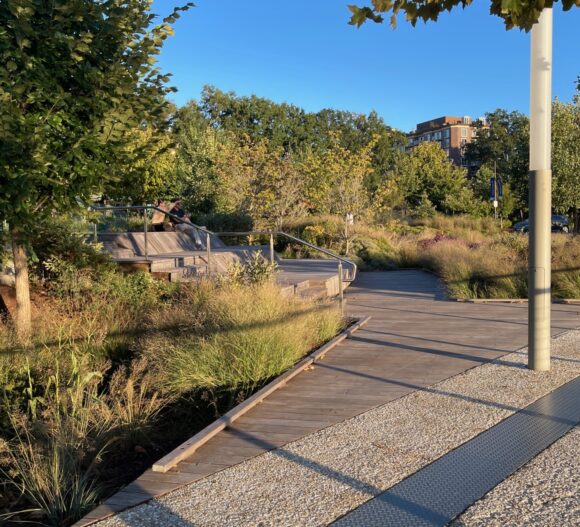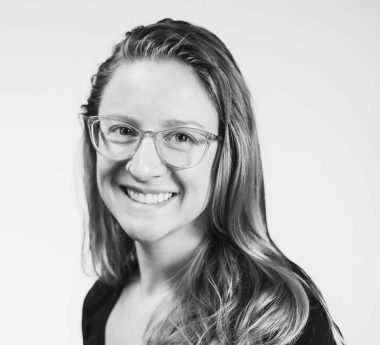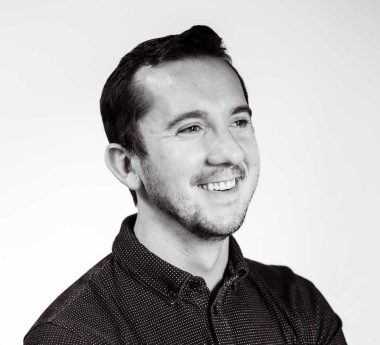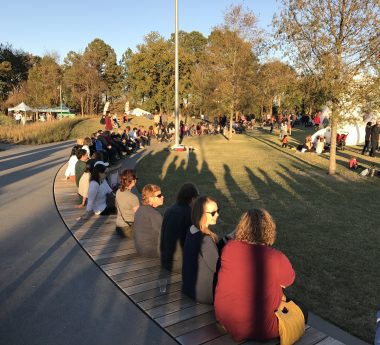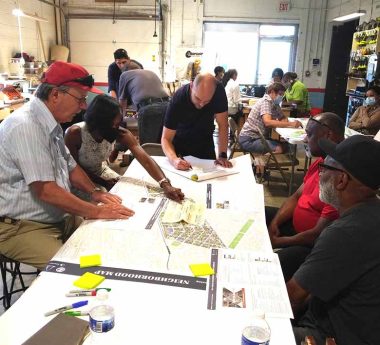What was your overall impression of this year’s ASLA conference in Washington DC?
Lindsay: I’d attended the 2014 and 2019 conferences in Denver and San Diego, respectively. I was a student volunteer in 2014, and today I’m managing projects, so my perspective is broader, and I find even more opportunities to absorb new information and apply it to my work. It’s energizing and inspiring to see and hear what other firms in the industry are doing.
Sam: this was my first time attending the national ASLA conference, and I already look forward to going to future conferences. It’s a great place to take an industry pulse and exchange ideas.
Did any presentations or discussions stand out to you?
Sam: The story of the University of Dubuque’s 25-year campus master plan, led by O2 Design, was fascinating to hear in person. I grew up in Iowa, so the presentation felt very tangible to me personally; and I appreciated that the team balanced design and strategy, using quantitative data to prioritize investments and measure their impact. When the project had started 25 years ago, the school was struggling with significant recruiting challenges and even considered shutting down. And now, thanks to this design-led approach, the school has been transformed. Coincidentally, a man who’d grown up on campus when his father had worked there, was in the audience and spoke up—moved to tears by the powerful evidence of progress.
Lindsay: The passion within our industry is apparent, and two presentations stood out to me in this way. The first was a discussion of using reclaimed materials in design, and the benefits and challenges of this. It got me thinking that we’re all so accustomed to the ease of selecting products from vendors’ catalogs that we likely overlook opportunities to reuse elements that already exist in public spaces, even though there are obvious cost savings and environmental benefits of doing so. There is so much waste in our world, and especially in construction when buildings or sites are demolished. In interior design, we see so much reuse in the form of antiques and vintage furniture and fixtures that give spaces character and charm. We need to consider more of this in landscape design.
The second stand-out to me was a discussion of outdoor lighting and its impact on nocturnal ecosystems, with recommendations for responsible lighting design that balances beauty and safety with our natural needs for darkness. Nancy Clanton from Visibility Innovations, based in Colorado, was part of this discussion and very informative about the impact of lighting on wildlife and trees. She motivated me to think more critically about how much light our spaces really need. In fact both of these presentations inspired me to approach my work a little differently.
